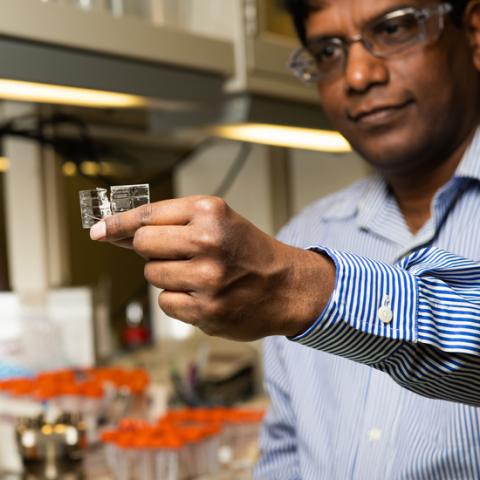PNNL Scientists Target Dangerous "Forever Chemicals" Contaminating Hundreds of U.S. Sites

PNNL materials scientists are developing and testing specialized materials called metal organic frameworks that can sense and capture a hazardous group of chemicals that can be persistent in the environment — a technology that may help cleanup efforts aimed at protecting groundwater.
Photo courtesy of Andrea Starr, Pacific Northwest National Laboratory.
Published: July 20, 2020
